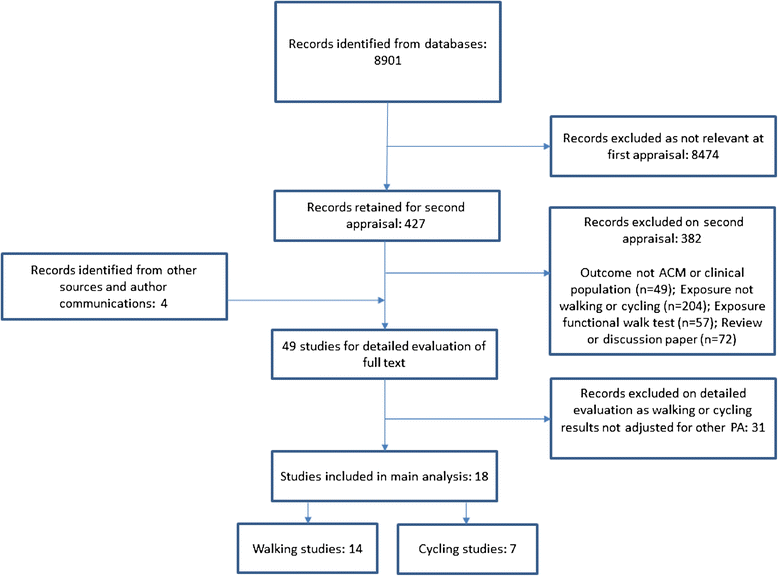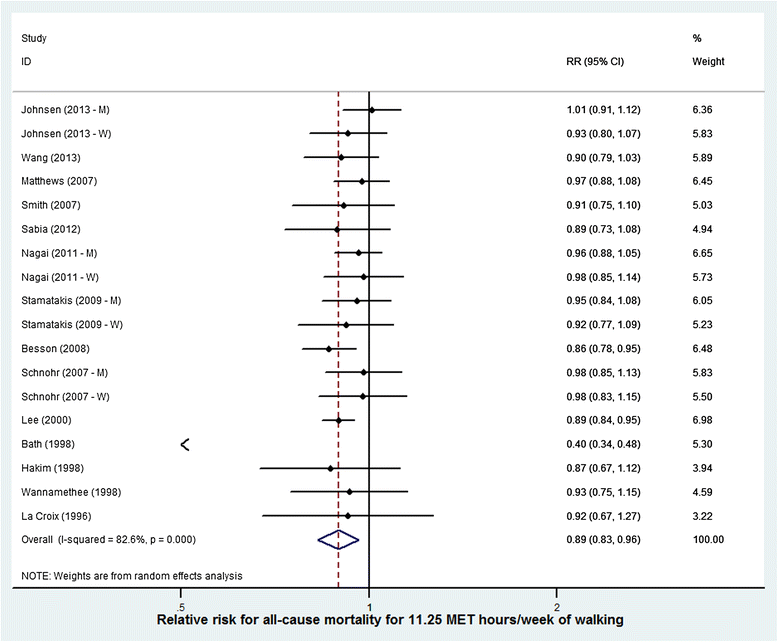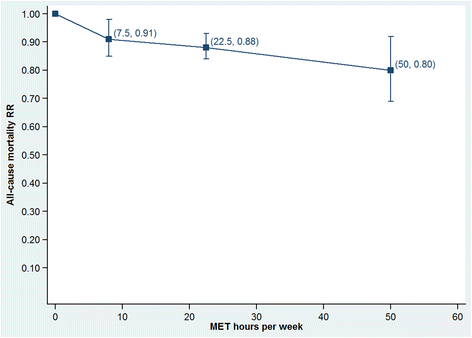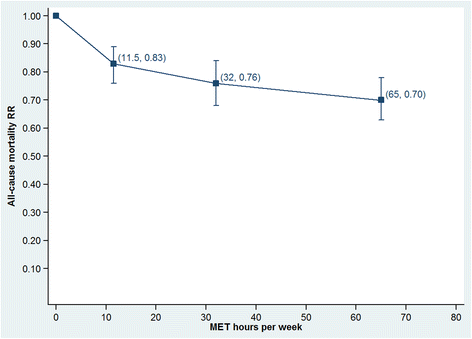Systematic review and meta-analysis of reduction in all-cause mortality from walking and cycling and shape of dose response relationship
- PMID: 25344355
- PMCID: PMC4262114
- DOI: 10.1186/s12966-014-0132-x
Systematic review and meta-analysis of reduction in all-cause mortality from walking and cycling and shape of dose response relationship
Abstract
Background and objective: Walking and cycling have shown beneficial effects on population risk of all-cause mortality (ACM). This paper aims to review the evidence and quantify these effects, adjusted for other physical activity (PA).
Data sources: We conducted a systematic review to identify relevant studies. Searches were conducted in November 2013 using the following health databases of publications: Embase (OvidSP); Medline (OvidSP); Web of Knowledge; CINAHL; SCOPUS; SPORTDiscus. We also searched reference lists of relevant texts and reviews.
Study eligibility criteria and participants: Eligible studies were prospective cohort design and reporting walking or cycling exposure and mortality as an outcome. Only cohorts of individuals healthy at baseline were considered eligible.
Study appraisal and synthesis methods: Extracted data included study population and location, sample size, population characteristics (age and sex), follow-up in years, walking or cycling exposure, mortality outcome, and adjustment for other co-variables. We used random-effects meta-analyses to investigate the beneficial effects of regular walking and cycling.
Results: Walking (18 results from 14 studies) and cycling (8 results from 7 studies) were shown to reduce the risk of all-cause mortality, adjusted for other PA. For a standardised dose of 11.25 MET.hours per week (or 675 MET.minutes per week), the reduction in risk for ACM was 11% (95% CI = 4 to 17%) for walking and 10% (95% CI = 6 to 13%) for cycling. The estimates for walking are based on 280,000 participants and 2.6 million person-years and for cycling they are based on 187,000 individuals and 2.1 million person-years. The shape of the dose-response relationship was modelled through meta-analysis of pooled relative risks within three exposure intervals. The dose-response analysis showed that walking or cycling had the greatest effect on risk for ACM in the first (lowest) exposure interval.
Conclusions and implications: The analysis shows that walking and cycling have population-level health benefits even after adjustment for other PA. Public health approaches would have the biggest impact if they are able to increase walking and cycling levels in the groups that have the lowest levels of these activities.
Review registration: The review protocol was registered with PROSPERO (International database of prospectively registered systematic reviews in health and social care) PROSPERO 2013: CRD42013004266.
Figures





References
-
- Bull FC, Gauvin L, Bauman A, Shilton T, Kohl HW, 3rd, Salmon A. The Toronto charter for physical activity: a global call for action. J Phys Act Health. 2010;7:421–422. - PubMed
Publication types
MeSH terms
LinkOut - more resources
Full Text Sources
Other Literature Sources
Medical
Miscellaneous

